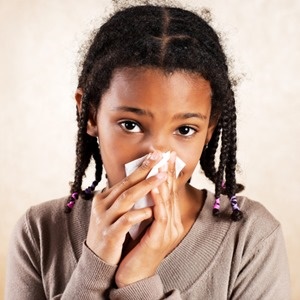
Allergies can make a toddler’s life miserable, and easing their discomfort can be quite challenging – but what if allergies could be prevented? A new report in Annals of Allergy, Asthma and Immunology – the scientific journal of the American College of Allergy, Asthma and Immunology (ACAAI) – shows a significant link between several prenatal and early life exposure to indoor pollutants and the degree of allergic sensitivity in two-year-olds.
"Because most children are exposed to more than one pollutant or allergen, we examined the relationship between multiple exposures and allergic sensitisations at two years of age," said Mallory Gallant, MSc, lead author of the study. She added that they examined exposure to dogs, cats, air fresheners, candles, mould, environmental tobacco smoke (ETS) and carpets – all of which have been linked to childhood allergies.
The guilty exposures
108 mother-child pairs were followed from birth to two years of age, the report notes. Exposure to air fresheners, candles, mould, cats, dogs, carpets and environmental tobacco smoke (ETS) during prenatal, six-month, one-year, and two-year timepoints were recorded, and a positive skin prick test (SPT) was performed on both the mother and the two-year-old child to measure allergic sensitivity.
According to Eurekalert, allergic sensitisation simply means that a person has had (or may have had, given the possibilities of false positives) an allergic type immune response to a substance. However, it does not necessarily mean that the substance causes them problems.
Out of all the exposures measured, it was found that prenatal exposure to candles, six-month exposure to cats and two-year exposure to ETS remarkably increased the chance of a positive skin prick test (SPT) at two years of age.
"The increase in the average amount of time indoors means there is an increased risk of harmful health outcomes related to exposure to indoor air pollutants," said allergist Anne K. Ellis, MD, study author, and member of the ACAAI Environmental Allergy Committee.
Ellis also explained that because children breathe more frequently per minute than adults, and mostly breathe through their mouths, this could be a factor in allowing air pollutants to penetrate more deeply into their lungs, and at higher concentrations, ultimately making children more vulnerable than adults to air pollutants.
Single vs. multiple exposures
The study also aimed to evaluate the effect of multiple exposures on allergic outcomes at two years of age. The study found that children with a positive SPT at two years of age had significantly more exposures prenatally, at the one-year and two-year time points, compared to children with a negative SPT.
As the number of indoor air polluting exposures increased, the percentage of children with a positive SPT increased.
“When considered together, the findings suggest that the effect of multiple exposures may contribute more to allergy development than one single exposure," Dr Ellis concluded.
Protecting your kids
If you have a kid with allergies, it’s important to have a written action plan as well as epinephrine auto-injectors readily available, according to reports by the American Academy of Paediatrics.
Epinephrine auto-injectors – not antihistamines – are the "first line" treatment for anaphylaxis, said Dr Scott Sicherer, professor of paediatrics, allergy and immunology at the Icahn School of Medicine at Mount Sinai in New York City, and co-author of the AAP reports.
Parents also need to talk with their paediatrician or allergist to know whether their child is at risk, added Sicherer, and should know how to prevent severe allergic reactions, i.e. by minimising their child's exposure to the culprit allergen.
According to the American College of Allergy, Asthma and Immunology, common allergy triggers in children include:
- Outdoors: tree pollen, plant pollen, insect bites or stings
- Indoors: pet or animal hair or fur, dust mites, mould
- Irritants: cigarette smoke, perfume, car exhaust
- Foods: peanuts, eggs, milk and milk products
They also note that allergy symptoms in children include:
- Skin rashes or hives (atopic dermatitis or eczema)
- Difficulty breathing (asthma)
- Sneezing, coughing, a runny nose or itchy eyes
A previous Health24 article also notes that a good way to protect your kids is to compile a carry-card that goes everywhere with them and contains information such as symptoms of their allergic reaction, the treatment they should receive in such a situation, as well as your contact details.
If you notice your child is struggling, and suspect they might be suffering from an allergy, consult an allergist as early identification of allergies can greatly improve their quality of life.
Image: iStock




 Publications
Publications
 Partners
Partners











